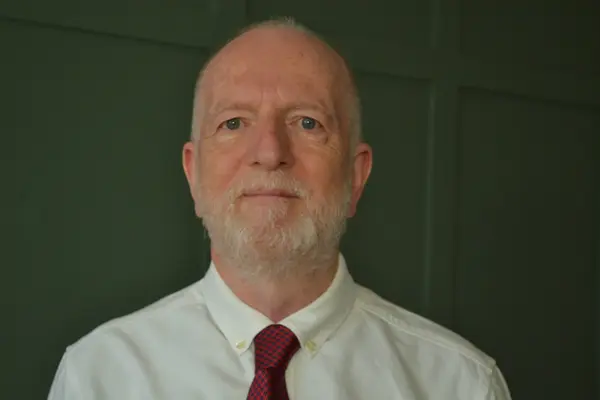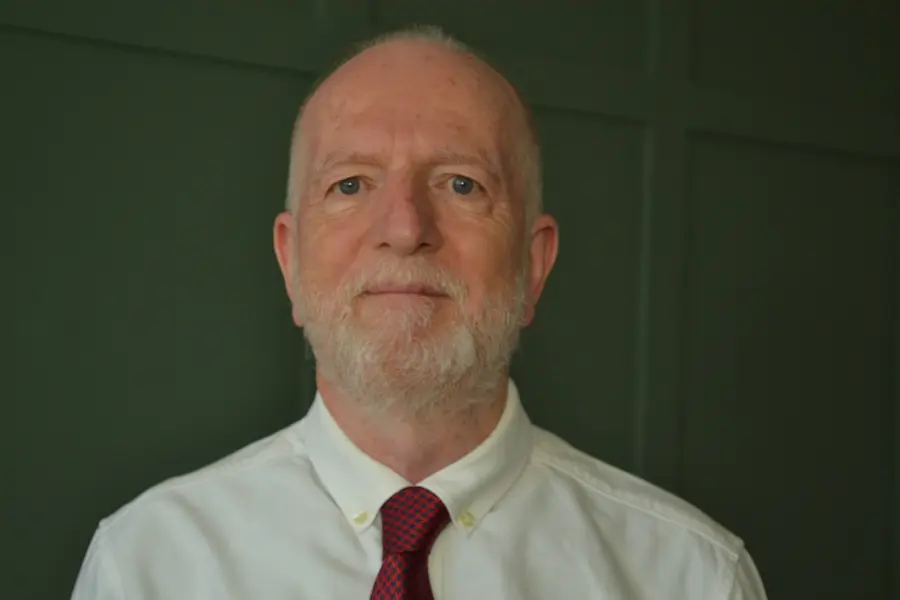
Gerry McMahon is an acknowledged national expert in People Management. He has over 35 years’ experience - as a workplace investigator (on bullying/harassment/ disciplinary/dismissal/grievance issues), trainer, negotiator, facilitator, mediator, arbitrator and team builder - across a wide range of employment sectors. He is the M.D. of the H.R. training and advisory company Productive Personnel Ltd.
Gerry has also had an extensive range of books and articles published and been a columnist with the Industrial Relations News, Irish Times, Sunday Business Post, and Irish Independent and expert commentator on H.R./Employee Relations for R.T.E. and TV3/Virgin. He has also served on numerous Legal Island and C.I.P.D. judging panels and is a Council member of the Irish Association for Industrial Relations.
Contact: Tel. 087-2471415; E-Mail: ppl1gerry@gmail.com
Mediation is a voluntary, positive, forward-thinking way of resolving disputes, using a neutral third party (the mediator) to facilitate a settlement.
A recent review by the Kennedy Institute for Workplace Mediation at Maynooth University confirms that mediation has numerous benefits. These include high settlement rates, participant satisfaction with the process and agreements secured, repaired relationships, improved morale and performance and cost effectiveness.
Hence it’s little wonder that researchers on alternative dispute resolution mechanisms at UCD and Queen’s University have found a significant growth in private mediation practices across major public and private sector employers, whilst the Mediators Institute of Ireland - with its certified mediators and strict Code of Practice - continues to establish a formidable reputation as the recognised professional institute for practising mediators.
Notably, the practice of mediation also features in the Government’s legislative programme, where there is a commitment to ‘promote mediation as a viable, effective and efficient alternative to court proceedings’.
What is a Mediator’s Role ⚓︎
The role of the mediator can be described as one of assisting the participants to understand the issue(s) at hand and to help them to reach their own agreement in resolving the matter(s). The mediation process itself normally proceeds on the basis that the mediator:
- Is independent, neutral and will not take sides.
- Will not make decisions for the participants.
- Will not hand down a solution or judgment.
- May request to meet with both parties independently during the process.
- Is in charge of the process but not the outcome.
The Irish Central Bank’s policy on workplace mediation explains that it can be successfully used to address friction arising from work or management styles, working arrangements and environmental conditions. Their listing of ‘issues’ that are appropriate for mediation spans:
- Interpersonal conflict/personality clashes
- Perceived discrimination, harassment and bullying
- Unreasonable work demands
- Inappropriate behaviour or treatment
- Differences of working style or approach
- Communication breakdown
- Inappropriate use of power, status or position.
Notably, it also explains that mediation distinguishes itself from other forms of conflict resolution in a number of ways, such as the fact that it’s:
i. Informal and doesn’t form part of the Grievance or Disciplinary processes.
ii. Flexible and Faster than other dispute resolution procedures. It’s also Voluntary, as parties are assisted in working out their own solution rather than having one imposed on them. In this regard, it is also notable that it’s morally – as opposed to legally – binding.
iii. Impartial and Confidential and it encourages participants to take charge of their own problems and solutions.
Despite the complex mix of competencies, skill-sets, knowledge-bases and behaviours or styles of mediators, for those tasked with the role, the following guidelines or steps to successful mediation will help:
Mediation Steps ⚓︎
Step 1
One or both parties may prepare a short summary of their positions or issues warranting mediation before the process commences and sends them to the mediator.
Step 2
After one or both parties contact the mediator – often via a referral from H.R. or management - they discuss whether mediation or other options are appropriate to resolve the issue in dispute. Hence, at the outset, the mediator can meet the individuals separately for the purpose of explaining the role and process of mediation. These initial interactions should define the core issues and outcomes that each party aspires to, whilst introducing the participants to the ground rules associated with the process. Thereafter the process may involve a mix of individual and joint meetings with the mediator.
Prior to the commencement of formal proceedings parties to the mediation process will be asked to sign off\commit to an acceptance of the mediator’s role and the ‘Ground Rules’. A ground rule often deployed at this stage entails parties signing off on a statement to the effect that: ‘We agree to enter into mediation in an effort to find a mutually agreeable solution to our disagreement. We agree to the ground rules and understand that mediation is voluntary and confidential’. With regard to confidentiality, discussions with the mediator are private and details of what occurs within the process are not formally recorded or available for subsequent use in any other forum.
Another appropriate ‘Ground Rule’ for consideration at this important stage is that parties agree to make a conscious, sincere effort to use the process to work toward the fairest and most constructive agreement possible. Other helpful ‘Ground Rules’ that parties may be asked to adhere to are that:
- In the course of all meetings, parties agree to call each other by their first names and to make a genuine effort to use respectful language, refraining from unproductive arguing, blaming, attacking or making ‘put down’ type comments. Should parties to this process pose questions for one another they shall be for the purpose of gaining clarity and understanding.
- In the course of all meetings, parties agree to take turns speaking and not interrupt each other, listening respectfully and genuinely trying to understand the other person's position.
- In the course of all meetings parties agree that even if they do not agree with comments, each person is entitled to their own perspective.
Step 3
Having agreed to mediation and the aforementioned ‘Ground Rules’, parties will also need to consider how much time to allot to the process and who can participate (i.e. the timescale and the parties allowed attend the meetings). The mediation process usually allows for representation and parties can also seek expert advice if needed. However, in general, parties speak for themselves in the mediation process. For example, the Central Bank’s policy states that: ‘Mediation works best when involvement is restricted to those who are directly involved in the dispute. However, it is recognised that in certain circumstances the direct involvement of a representative may assist the process’. Likewise, the dignity at work policy for An Garda Siochana enables: ‘Accompanying persons such as a colleague, friend or staff association representative’ who ‘are welcome at mediation’, though ‘the mediator will agree with the parties at the outset as to how they can contribute to the mediation process’.
Step 4
In line with the aforementioned ‘Ground Rules’, it is common for the mediator to begin by reminding the parties that mediation is a voluntary process and that he\she is there to help them reach an agreement, not to reach an agreement for them. Where communications have broken down completely, the mediator may start the process by talking with the parties separately. However, having secured commitment to the ‘Ground Rules’, parties can convene in the same room (with their representatives) and are reminded as to how they have agreed to work (together) during the process. Each party may then make a preliminary presentation on the issues of concern, notably without interruption from the other party.
Throughout the process, the mediator adopts and maintains a neutral mindset (i.e. remains impartial). Unlike some forms of dispute resolution, mediation is non-judgmental and non-directive. The disputing parties are aided in a discussion whereby both parties to the process can air their grievances and be heard. In due course, the mediator will begin to summarise the main areas of agreement and disagreement and draw up an agenda (with the parties) of issues to be addressed during the remainder of the mediation process.
Step 5
Having agreed the agenda and identified the issues for consideration, the mediation process is now about encouraging communication between the individuals, promoting understanding and empathy and changing perceptions. The aim of this part of the process is to begin to shift the focus from the past to the future and to begin to look for constructive solutions. Having already aired their issues (or grievances), parties to the process do not dwell on things that did not work in the past, but instead, they now start to focus on the future, in a manner that will enable them to maintain respectful and dignified communication with one another going forward. For example, the bullying\harassment policy for An Garda Siochana explains that ‘mediation may only be appropriate in cases where both parties can agree that a decision on whether the alleged behaviour constitutes bullying or harassment is not as important as reaching an accommodation which will allow both people to work together in the future’.
Step 6
The parties in dispute may have separate private discussions with the mediator. Better still, they may be able to work together in the same space to progress the dialogue about the issue(s) that have divided them. Alternately, some mix of unilateral and joint interactions may be the most judicious route forward. Having helped each party to hear the views of the other and identified areas of common concern, the mediator now progresses the parties toward the ground(s) for resolution. Using effective listening, questioning and clarifying techniques – allied to appropriate interventions - the mediator will have assisted parties in developing an awareness that is designed to feed into this joint problem-solving process.
Having successfully focused the parties on each other’s agendas, interests and desired outcomes, the mediator now helps parties come to a resolution by encouraging and supporting joint problem solving and ensuring that the proposed solution(s)\agreement(s) are workable. At this stage, the mediation process is also helping parties to draft the terms of an agreement for eventual signature.
It is important at this point that there be no repetition of arguments, as the mediator’s ‘move on’ questions force participants to consider:
- What common interests have you in finding a solution?
- What is really needed to fix things for the future?
- What must be done to satisfy you that matter(s) have been dealt with in a manner that allows you to work together harmoniously in the future?
- What type of solution(s) do you envisage that will enable you to maintain respectful and dignified interactions\communication with one another going forward?
Step 7
Once an agreement has been reached, the mediator brings the process to a close, provides a copy of the agreement to the parties for signature and reminds them of their responsibilities for its implementation. Parties may now also want to consider the option of including appropriate review or monitoring arrangements for the future. At this stage, it should also be agreed as to who (if anybody else) will receive copies of the agreement (e.g. the relevant line manager(s) or HR partner). It is also important to note that records of the mediation process are not normally kept on personal files, as the notes taken by the mediator are discarded once the process has been concluded. If parties are unable to reach an agreement via mediation, they are free to pursue other procedures to try to resolve their issue(s) (e.g. the grievance, disciplinary, bullying/harassment procedure) or to return to mediation at a later date.
Continue reading
We help hundreds of people like you understand how the latest changes in employment law impact your business.
Please log in to view the full article.
What you'll get:
- Help understand the ramifications of each important case from NI, GB and Europe
- Ensure your organisation's policies and procedures are fully compliant with NI law
- 24/7 access to all the content in the Legal Island Vault for research case law and HR issues
- Receive free preliminary advice on workplace issues from the employment team
Already a subscriber? Log in now or start a free trial

